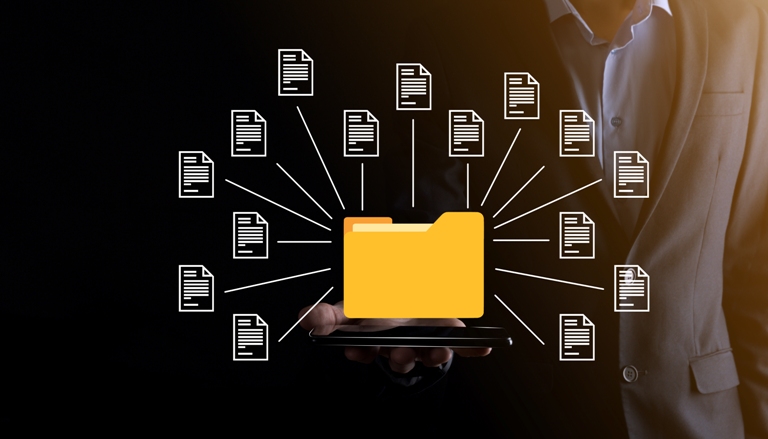
Every business has to manage documents. What matters is the way they do it. This is something that has changed dramatically in the last five years. Traditionally, important documents were kept in cabinets. They were vulnerable to damage, loss, and destruction. This led to the rise of the digital document management system, along with the use of automating document management software.
Digital documents are easier to store than paper documents. But they can easily spread across multiple devices, servers, and systems. When you needed to find something specific, it was even harder to find it than digging through paper archives.
Then came the document management software. It was a smarter, faster, and more secure way to manage the documents. Now, the document management software has evolved a step further as an automating document management software.
The modern trends shaping the document management software in 2025 are driven by AI, automation, blockchain, and technology. Adding these solutions can increase your organization’s efficiency and help you achieve your business goals.
Here Are the 5 Trends in Automating Document Management Software:
1. AI-Powered Indexing: Converting Documents into Data
There is no denying that AI has automated the majority of tedious work, including sorting, tagging, and retrieving documents. Now, you no longer have to manually tag the documents with keywords and remember those keywords while pulling up a report from a few years ago.
Natural Language Processing (NLP) is a subset of AI. It enables computers to understand, analyse, and produce human language. In simple terms, your document can now read, understand, and fetch relevant information while also categorizing it. If you need to retrieve any data or information, you can ask the program directly. No need to remember any keyword or file name.
2. Advanced Automation = Smarter Workflow
This is a crucial aspect of automating document management software. Workflow automation in document management is not a new concept. However, the feature has advanced a lot. Instead of primitive, rules-based triggers, sophisticated systems today use AI and real-time data to adapt. These systems utilize content, behavioural patterns, and predefined rules.
Modern-day document management systems can route documents to their intended destinations based on their context. For instance, the system identifies if a document is a contract that requires approval from the legal department. It can automatically route it and share an alert.
Also, you can add separate approval chains if multiple stakeholders are involved who need to sign off on a document. Let’s say you can create an advertising campaign and share it with a senior manager for content and budget approval. Also, you can share it with the legal department for a compliance check.
Automated workflows also included document lifecycle management. This is where you create documents, collaborate on them, archive them as needed, and then destroy them. Everything is done with minimal manual intervention, ensuring full compliance with data protection laws.
Automating document management software ensures complete integration with the enterprise resource planning (ERP), customer relationship management (CRM), email platforms, and other business tools. Thus, you can add them to your existing workflows.
Also Read: Unlocking Efficiency: The Role of Enterprise Document Management Systems in Modern Business
3. Blockchain – A Whole New Level of Trust and Transparency
We have seen the use of blockchain in digital currency. Now, it’s being used in document management systems. To explain things simply, blockchain is a decentralized ledger that records every transaction and uses cryptography to link it to the one before it. This can’t be changed till the whole network agrees. Thus, it is tamper-proof and fraud-resistant.
Since it is transparent and offers undeniable document verification, it offers valuable audit trails. Specific industries, such as legal, finance, and healthcare, as well as any other publicly traded companies, need to provide evidence of everyone who accessed a document and the changes they made to it for compliance purposes.
That’s what makes blockchain a great aspect of automating document management software. Law firms can utilize blockchain technology to verify that a contract has not been altered after it was signed. Healthcare organizations can show that only authorized employees have accessed the patient’s file. Such transparency is a boon for organizations that need to comply with legislation.
4. Sustainability along with Automation Brings Storage Innovation
Modern document management solutions include advanced technologies that require massive processing. These applications require resources and use a lot of energy and water. That’s why many companies are taking up eco-friendly measures. Cutting-edge data centres are developed using renewable energy sources, such as solar panels and battery storage systems. These data centres have the goal of net-zero emissions.
Smart archival system automatically archives and deletes data when it is no longer needed. Therefore, you should not waste energy storing redundant or unnecessary data. Also, the shift from paper-based to digital document storage reduces the carbon footprint. Cloud-based options help you create, share, and store documents without needing paper or other resources to transport, store, and dispose of documents.
5. Digital Thread: Connecting the Dots throughout the Enterprise
Think about trying to put together such a puzzle where every piece of it is locked in separate rooms. That’s how an organization feels when they are not able to connect its documents and data. Automating document management software is such a digital trend that changes this hassle. It offers a unified view of data and documents throughout the entire enterprise. This ensures that everyone is aware of the same source of information.
Imagine this: The manufacturing team is creating a new product, the engineers are checking CAD drawings, while the compliance team is reviewing contracts, and the suppliers are sending invoices. Automating document management software includes a digital thread where all the data points are linked. Everyone will have access to all the updated information, whether they are on a factory floor or in a boardroom. Miscommunication? Completely eliminated. No more redundant work.
Conclusion
Automating document management software is making it easy for businesses to offload tedious manual processes that are crucial but time-consuming. Thus, business enterprises can now focus on the primary business functions and offer more value to the customers. The age of static documents is over. As these trends unfold, it is crucial for every business to stay competitive while adopting technologies that drive action, insights, and ensure operational efficiency.










